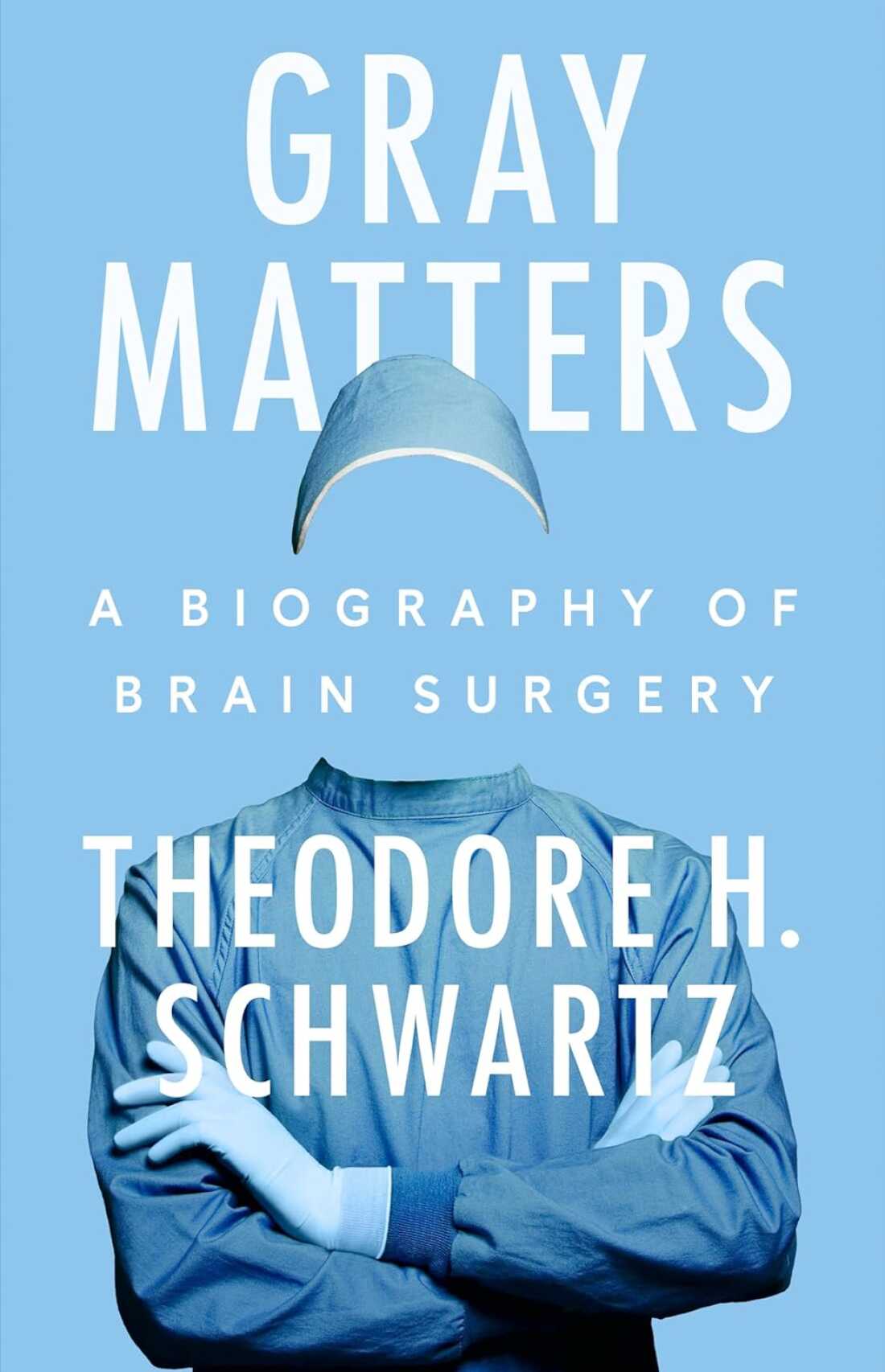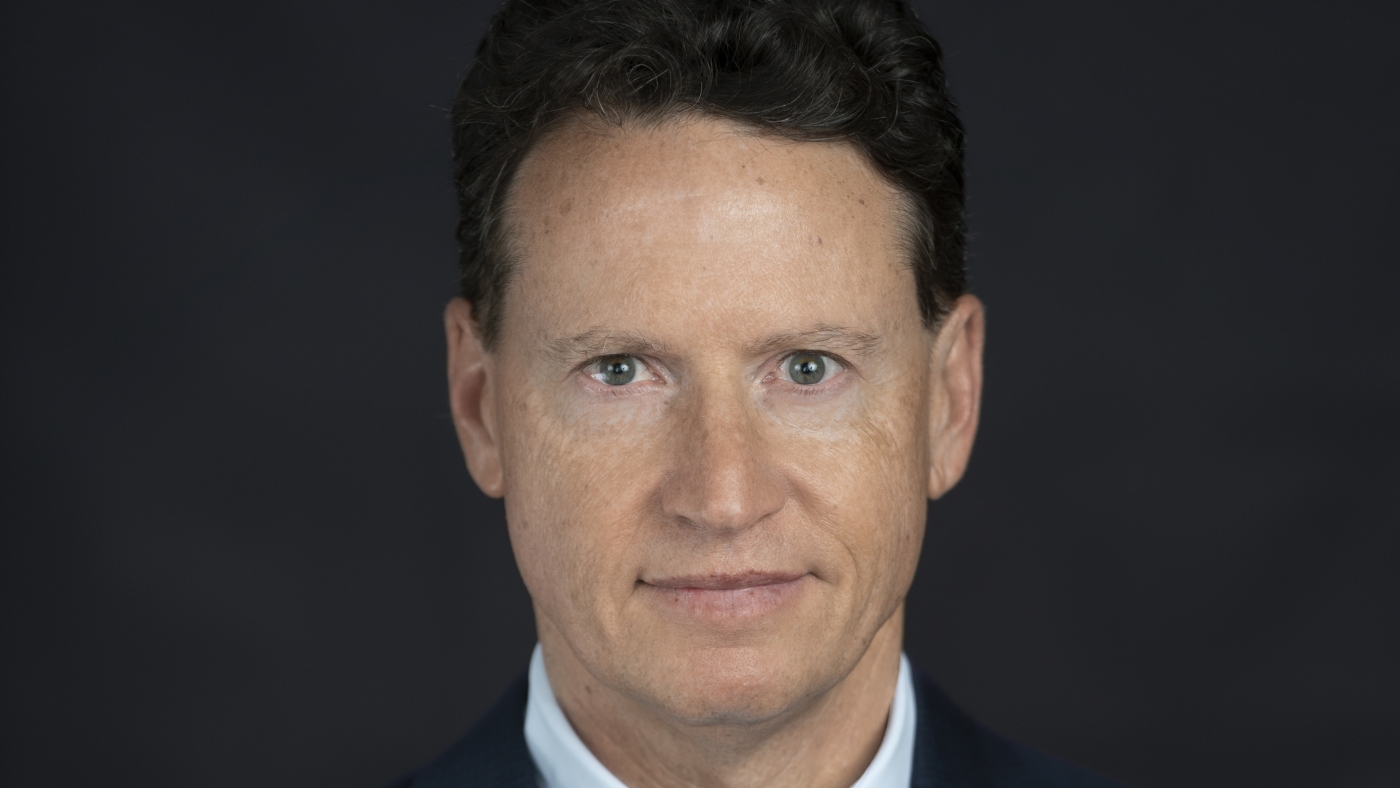“Everything that we are as human beings is in our brain,” Dr. Theodore Schwartz says.
Brian Marcus
/Penguin Randomhouse
hide caption
toggle caption
Brian Marcus
/Penguin Randomhouse
Neurosurgeon Theodore Schwartz still remembers the first time he witnessed brain surgery in person. He was in medical school, and the surgeon sat in a special chair that was designed to hold the arms up while they worked under a microscope.
It reminded Schwartz of the way an astronaut looked in the cockpit of a spaceship — except, he says, “[The surgeons] were traveling into the microcosm of the brain instead of traveling into the macrocosm of another planet.”
“When I first saw that, it was nothing but awe and excitement and the fact that they were doing it to help another human being and going into the brain and the mind,” Schwartz says. “Everything that we are as human beings is in our brain.”
Schwartz has since spent nearly 30 years treating people with neurological illnesses. When he was first getting started, he worried about keeping his hands and body steady during long surgical procedures that might stretch on for hours. But he says over time he’s trained his body to enter what he describes as a surgical “flow state.”
“It’s sort of the ultimate in mindful meditation,” he says. “The external world does not exist for that period of time. And the same is true of your bladder. … And then at the end of the operation, You kind of realize, ‘Oh my goodness, I have to go to the bathroom. I’m tired, my neck hurts, my back hurts.'”
Schwartz writes about the past, present and future of neurosurgery in his book, Gray Matters: A Biography of Brain Surgery. He notes that while traditional brain surgery involves opening up the side of the skull, the practice of “minimally invasive brain surgery” — whereby the brain is accessed via the nose or by the eye socket — has become more mainstream over the course of his career.
“We can do surgeries now by making a small incision in the eyelid or the eyebrow and working our way around the orbit in order to get to the skull base,” he says. “And that allows us to get to these very delicate parts of the brain much more quickly, and without disrupting as much of the patient’s anatomy so that they heal much faster.”
When it comes to brain health, Schwartz recommends the basics: exercise, a healthy diet and plenty of sleep. “And besides that, I don’t know that we really know what we can do to keep our brains healthy. So that’s the recommendation I would give,” he says.

Gray Matters, by Theodore Schwartz
Penguin Random House
hide caption
toggle caption
Penguin Random House
Interview highlights
On the need for power tools for such delicate surgery
We think of brain surgery as something that’s very fine and delicate … but the brain is housed in the skull, and the skull is very, very strong. And that’s what protects our brains from injury. And so part of what we have to do as brain surgeons is first get through the skull. And that work is often very physical and involves drills and saws in order to get through the bone. We obviously do it very carefully, because the trick is to get through the bone and not damage the underlying contents. But we have to use power tools, and that’s how we start out every operation, with saws whirring and buzzing and making noise and sort of bone smoke going in the air before we transition to the careful, delicate microsurgery that we do after that.
On trying a new method of surgery when the stakes are so high
You realize the gravity and the importance and the significance of the fact that this other person’s life is in your hands and you’re trying something on them that you think will be better, for sure, but you’re not sure yourself of your own ability because you haven’t done it 100 times. And that’s really terrifying. And it’s something that we have to deal with as neurosurgeons. Not just when we try something new, but essentially every time we do an operation, we’re taking on that enormous responsibility of another human being’s life.
While the majority of our surgeries go extremely well, occasionally they don’t. And when that happens, it weighs on you tremendously. And it affects how you think about all the subsequent cases that you’re going to do that are similar, because you never forget those cases that didn’t go quite the way you wanted them to go.
On relieving pressure in brain by cutting a hole in the skull
One of the most common surgeries that neurosurgeons do is head trauma. And head traumas are very common. But these are neurosurgical emergencies. Anyone who has hit their head severely enough, they will have swelling in their brain. And we can now save these people’s lives just by opening up the skull. Because as the brain swells, if it has nowhere to go, that’s when the pressure goes up. So neurosurgeons can go in very quickly and remove part of the skull, and let that pressure out and then put the skull back, maybe, two or three weeks later, or maybe even a few months later when the swelling has gone down and we can save lots and lots of lives that way.
On how the field of neurosurgery is changing
One of the things I love is that, some days or weeks I’ll come in and I’ll be training a fellow and we’ll go through six, seven, eight operations and I’ll tell them, all these operations that we just did together, I didn’t learn how to do any of these in my training 25 years ago. They’re all completely new operations. And that’s a wonderful thing about a field like brain surgery, is that we are constantly applying new technology and the field is changing and you have to stay up to date, but it also keeps you active. It keeps you thinking. You’re constantly working with engineers and people in other fields to figure out what’s the latest technology going on in, you know, oncology and orthopedics and OB/GYN that we can apply to neurosurgery? To try to make what we do better.
On seeing his father’s stroke and aphasia when he was in residency
It was just this profound moment of seeing my father’s brain appear before me and fearing I was going to see a problem. And sure enough, there was this sort of dark spot which I know to be a stroke, and he had had a horrible stroke that took away his ability to speak. As a result of the surgery he had, and unfortunately passed away a few weeks later. But it was just [a] devastating experience for me. And as much as I know about the brain, I knew too much about what was going on. I also knew that at that moment in time, there was nothing we could do for him.
On the union of the brain and the mind
I think everything that a human being experiences, in the external world and the internal world is all your brain. I think that’s all that there is. I don’t think there’s some mystical second substance called “mind.” … We think the mind and the brain are different things because it’s built into our language. It’s how we talk about the mental world around us. We were raised speaking a language with words that refer to things that may not exist in the real world — and one of those things is mind. … I do not think we have as much agency over what we do, if any. And I think the brain is processing information, below our radar, unconsciously, subconsciously, whatever you want to call it, and creating behaviors. And we are just along for the ride to some extent.
Sam Briger and Joel Wolfram produced and edited this interview for broadcast. Bridget Bentz, Molly Seavy-Nesper and Carmel Wroth adapted it for the web.


